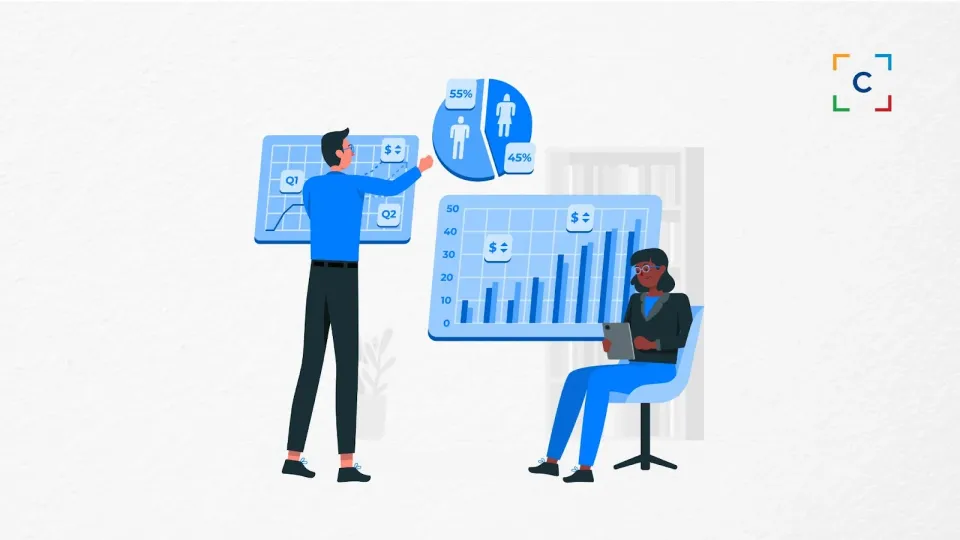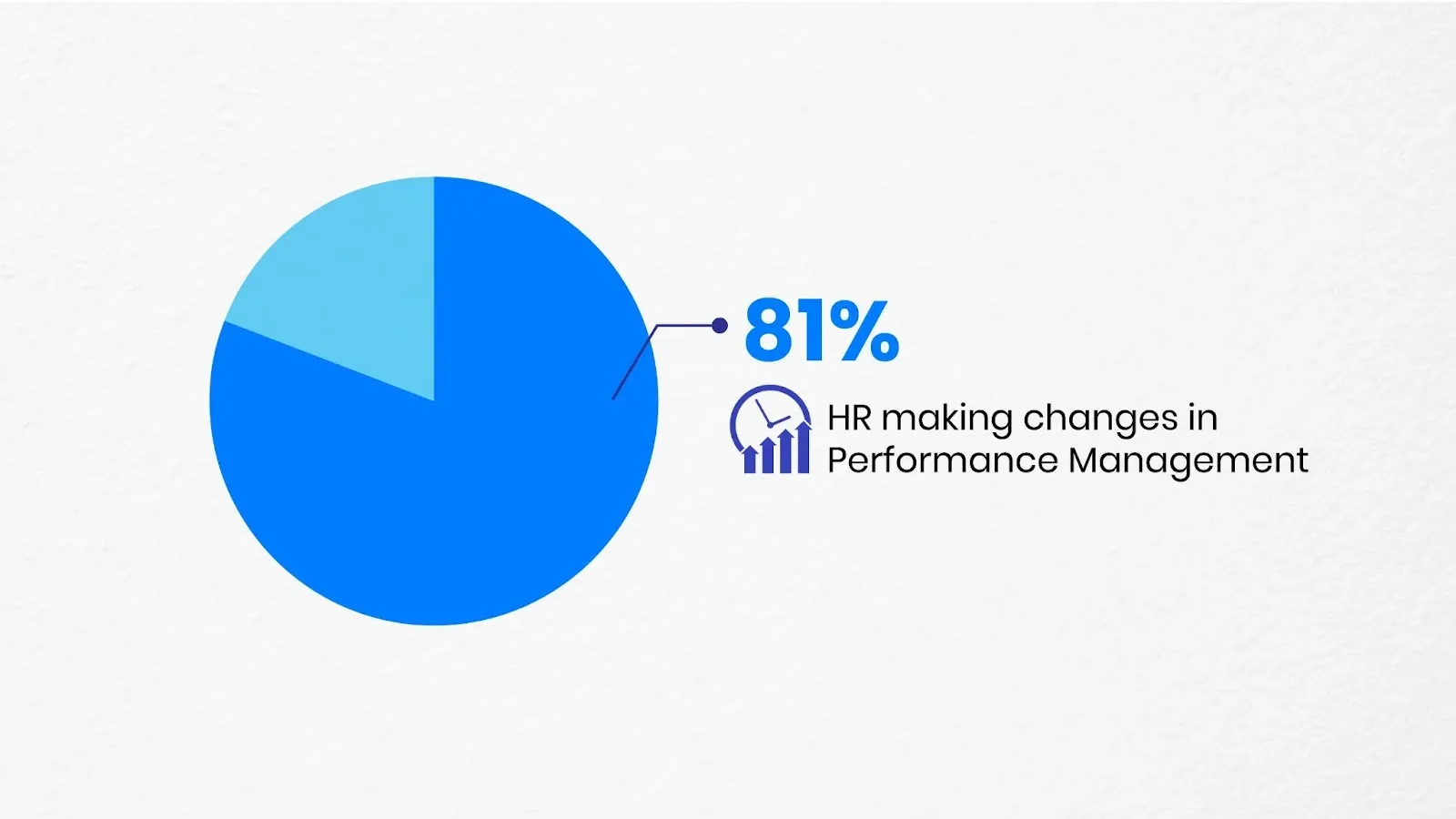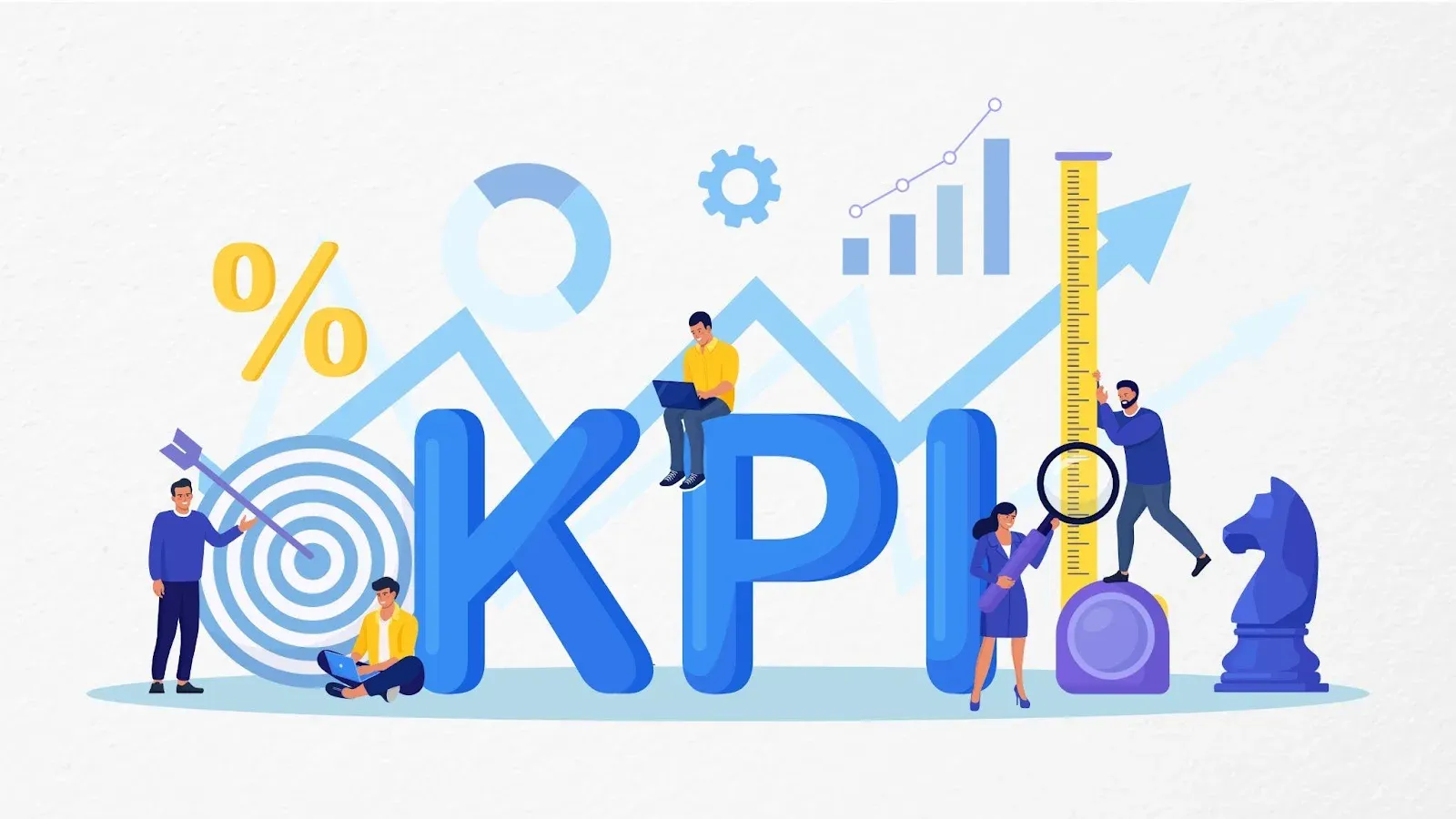How to Set Effective KPIs for Employee Performance Management

Still thinking about why your employee's performance is lagging? Despite having strategic performance management strategies?
Being an employer, you are accountable for your employee's performance management. And poor performance leads to poor company performance. So, directly or indirectly, all responsibility lies in your hand. But what is the problem?
The answer is a need for a KPI setting. When you plan strategies to improve employee performance, you must set effective KPIs for your employees to follow for better and less error-free performance.

Let's understand why it is essential to set KPIs with Gartner's data: 81% of HR leaders constantly change their performance management to improve employee performance.
If this keeps repeating, HR won't be able to move further, nor will the employees and their career growth. And indirectly, the company will. So, using KPI metrics to assess your employee performance and measure their success in achieving overall company growth is essential.
Let's understand this in detail in this blog.
Importance of KPI

Being an employee, you are accountable for employee performance and the Company's overall growth. So, setting KPI is a strategic approach to increase overall performance and growth. By setting KPIs, you can monitor your employees and how their efforts will contribute to the Company's overall development. To ensure better results, these KPIs must be set and effective, meaning they accurately reflect the goals and values of the organization.
So, let’s understand in detail why KPI is essential.
KPI to track company growth
- Focuses Efforts: Setting KPIs will help your Company direct its efforts toward achieving key objectives. It ensures that resources are effectively allocated, maximizes productivity, and guides your team toward goals.
- Measures Progress: By setting KPIs, you can quantitatively measure your Company's progress over time. This allows you to assess whether your Company is on track to meet strategic goals and facilitate timely strategy adjustments.
- Improves Decision Making: KPI provides valuable data that informs decision-making processes. With Clear metrics, you can make more informed choices, prioritize initiatives promoting growth, and adjust tactics that may not deliver expected outcomes.
- Enhances Accountability: Setting KPIs establishes clear performance expectations for your team members in the Company. This will create accountability and ensure everyone understands their contribution towards the Company's common interest and growth. This leads to a culture of responsibility and continuous improvement.
KPI to track Employee performance?
- Objective Measurement: When you set KPIs, it will provide clear and quantifiable measures of your employee's performance. This will allow you to evaluate objectively against predefined objectives and make a fair and unbiased assessment.
- Performance Improvement: By setting KPIs, you can identify performance gaps and areas of improvement for your employees. This will lead to targeted development plans and strategies that enhance individual and team effectiveness.
- Alignment with Organizational Goals: You can ensure that your employees' efforts are aligned with your organizational objectives, which develop a unified direction. Also, it maximizes the impact of individual contribution towards achieving strategic goals.
- Motivation and Engagement: KPI is a motivational tool that sets clear employee expectations and goals. Achieving these benchmarks will boost their morale, increase job satisfaction, and encourage continued personal and professional growth.
Practical KPI Setting for Employees
Effective KPI (Key Performance Indicator) setting for employees is a strategic approach that ensures the goals they are working towards are aligned with the organization's broader objectives. This process involves many aspects of overall performance and growth, such as business objectives, using SMART goals, types of KPI indicators, communication, etc.
Let's understand everything in detail to set effective KPIs for employees to boost the overall performance and growth of employees and the Company.
KPI Alignment with Business Objectives
Aligning KPIs with business objectives involves a strategic process to ensure that the metrics used to evaluate performance directly contribute to the Company's overall goals. Here's how this can be effectively achieved:
- Identify Company Goals: Your goals could range from increasing profits to enhancing operational efficiency. Understanding what your Company aims to achieve is essential for setting KPIs.
- KPIs Linked to Company Goals: Once you identify company goals, design KPIs to measure progress directly towards these objectives. For example, if the goal is to increase sales, a KPI could be the percentage of sales quarter over quarter.
- Set SMART KPIs: To ensure KPIs are effective, they should be SMART. This means the goals should be:
- Specific
- Measurable
- Achievable
- Realistic
- Time bounded.
4. Regular Review and Adjustment: Business objectives can be transformed from time to time according to need, so the KPI should. Regularly review the alignment between KPIs and business goals to ensure they remain relevant and continue to bring desired outcomes.
SMART KPIs
Setting KPIs effectively should be SMART: Specific, measurable, Achievable, realistic, and time-bound.
- Specific: Make sure each KPI is straightforward and explicitly defines what will be achieved, eliminating ambiguity.
- Measurable: Establish a concrete method for tracking progress. This ensures you can see how close you are to meeting the goal.
- Achievable: Set challenging yet within-reach goals, given your current resources and constraints. This helps maintain motivation without setting the bar too high.
- Relevant: Align every KPI with your broader business objectives. This ensures that every effort directly contributes to your organization's overarching goals.
- Time-bound: Assign a deadline to each goal to create urgency and focus. This helps keep the team on track and pushes forward momentum.
Understand Leading and lagging indicators.
Leading and lagging indicators are two types of metrics used for performance achievement. Each provides unique insights into different aspects of business and employee performance. It would help if you understood their differences and the importance of balancing both to set effective KPIs.
Leading Indicators
According to their name, these metrics lead to future predictions. They predict measures that provide early indications about the future performance of anything. They indicate future events and trends before they even happen. This allows you to foresee what might happen based on current conditions.
For instance, poor sales will predict future loss, and less satisfied employees will predict employee turnover.
Importance: This will allow you to anticipate any dynamic changes and be prepared to face them. You can identify employee and business growth opportunities by constantly reviewing leading indicators.
Lagging Indicators
This is opposite to leading indicators, where which provide indications based on the outcome that occurred. They assess past performance and offer clear strategies for improvement. For example, financial results and customer retention are lagging indicators; they give predictions based on what has been achieved.
Importance: They are essential for evaluating the effectiveness of business strategies and processes, providing a solid foundation for performance assessment and strategic planning. By analyzing lagging indicators, organizations can understand the outcomes of their actions and make informed decisions about future strategies.
Balancing Between Leading and Lagging Indicators
You should focus on both indicators equally and assess performance and growth. A balanced foresight of the consequences of what will happen and what will happen will give you safe and precise predictions, based on which you can develop proactive action plans to achieve your overall goal.
Communication and Collaboration
Communicating and collaborating with stakeholders involved in setting the KPI process will help them understand the purpose of KPIs, and you can effectively attain the purpose of implementing them. Let’s know in detail:
- Ensuring alignment with an organizational goal - communication will help people know about KPIs and why they should follow them. This will lead to their efforts contributing towards the Company’s goal.
- Increasing Buy-in and engagement - a collaborative approach will induce employees to get into company goals and contribute to attaining them. This will develop a sense of ownership and accountability among them and keep them engaged.
- Ensure relevance and realism - while communicating with employees, you will get to know whether the KPIs they decided on are realistic and achievable by them or not. And by discussing them, you can come up with better suggestions too.
- Understanding and clarity - communicating KPIs will help employees understand them clearly, automatically allowing them to achieve targeted goals effectively.
Introducing getCREDIBLE: Unlock a Strong Digital Presence and Boost Your Credibility
getCREDIBLE is a steadfast partner in shaping a dynamic online presence that showcases your skills, expertise, and significant contributions to projects and achievements. It emerges as a reliable source for insightful and candid feedback on your career progress, creating a compelling impression on potential employers and marking a notable advancement in recruitment technology.
Yet, getCREDIBLE extends its offerings further. We provide a cutting-edge, interactive platform enabling you to chronicle and present your professional milestones through a 'Slate.' Your Slate acts as a living document of your career path. Highlights of getCREDIBLE include:
- Digital Slate: An evolving digital profile that keeps pace with your career progress.
- AI-Assisted Milestones: Advanced tools designed to pinpoint and document key career achievements.
- Feedback System: A platform for exchanging and obtaining authentic, career-focused feedback.
- Digital Slate Management: A user-friendly interface that aids in crafting and maintaining your digital portfolio, ensuring it accurately reflects your professional development and stays current.
Conclusion
Setting Key Performance Indicators (KPIs) is a crucial strategy for employers to assess employee performance and drive company growth. KPIs provide measurable goals that help employees understand what is expected of them and allow managers to track progress effectively. By aligning individual performance with the company's objectives, KPIs ensure that everyone is working towards the same goals.
Tools like getCREDIBLE can be valuable for employers in managing KPIs and enhancing employee performance. With its unique features, getCREDIBLE can help highlight employees' skills and achievements, making it easier to set and monitor KPIs that are aligned with the company's growth objectives.
Consider signing up for getCREDIBLE to leverage its benefits in setting and managing KPIs for your team, and take a step towards achieving your company's growth targets.
